Vuelta a España 2024 route: stage-by-stage analysis
Climbs of Lagos de Covadonga, Cuitu Negru and Picón Blanco star in typically mountainous route


The sprinters of the pro peloton could be forgiven for feeling a little aggrieved about the end-of-season races this year. The race directors of the major events have clearly opted not to design parcours suited to them.
The Olympic road race was too hilly for any pure fastman to take any of the limited starting places for their nations, and the World Championship route in Zurich is equally unfavourable. So what of the Vuelta a España? A race that so often serves up some long, flat, relaxed stages for the sprinters to unleash their speed at the end. Not so this year.
With eight classified mountain stages, five medium mountain stages, five hilly stages (some of which have uphill finishes) and two time trials, what’s left is just one flat stage.
Never mind the big-name sprinters, even the majority of the second-rate sprinters who came out of the Tour de France empty-handed aren’t bothering with the final Grand Tour of the year.
To add insult to injury for the fastmen, the final stage isn’t a flat, city centre circuit race, but instead a 24.6km individual time trial.
It's fair to say that any sprinters flying to Spain this month probably won't have their bikes with them but will instead be taking an early holiday.
So expect a race for the climbers. This is a Vuelta for the lightweight mountain men who until now have been fighting for scraps in the wheeltracks of the unstoppable Tadej Pogačar.
The latest race content, interviews, features, reviews and expert buying guides, direct to your inbox!
Here's a look at every stage. With the Vuelta a España 2024 start list now out, we've had a look at the contenders for the Spanish race, here.
LISBON > OEIRAS | 12KM | INDIVIDUAL TIME TRIAL
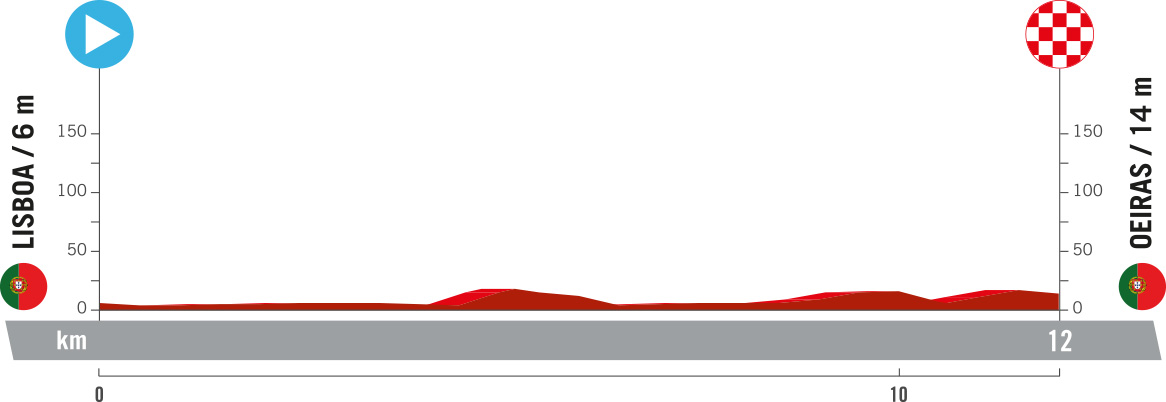
Foreign starts at the Vuelta a España have become more familiar in the 27 years since Lisbon, Portugal, became the first in 1997, with Netherlands and France among the countries visited in that time. This year the race returns to the Portuguese capital. Whereas in 1997 the stage and first leader’s jersey of the race was decided by a bunch sprint, in which Lars Michaelsen came out on top ahead of Claudio Chiappucci and Laurent Jalabert, the first leader of the 2024 edition will be determined by a time trial.
This 12km route misses out Lisbon's seven hills and their famous tram system, opting instead to follow the mouth of the Tagus river westwards until arriving at the finish at the well-to- do Oeiras. On such a flat parcours, a true specialist against the clock will be triumphant, and even 12km is enough for lighter climbing specialists to lose valuable time.
Sunday 18 August: Cascais > Ourém

Cascais is a wealthy beach resort famous for a casino that inspired the titular one James Bond frequents in Casino Royale. Riders gambling by getting into the day’s break have better odds of surviving than is usual for breaks this early in a Grand Tour. Their chances are assisted by terrain that, as the riders make their way inland from the coastline of the Portuguese Riviera towards Ourém, is undulating rather than flat. While the category-four Alto de Lagoa Azul that’s climbed immediately as the riders depart from Cascais should determine who gets into the break, how the stage will unfold hinges mostly on what happens on the other categorised climb of the day, Alto da Batalha, 18.5km from the finish. Will it be too hard for some sprinters to stay in the peloton? And could it spark stage-winning attacks, either out of the peloton or the break, that deny the sprinters a bunch finish against the backdrop of Ourém’s hilltop castle?
Monday 19 August: Lousã > Castelo Branco
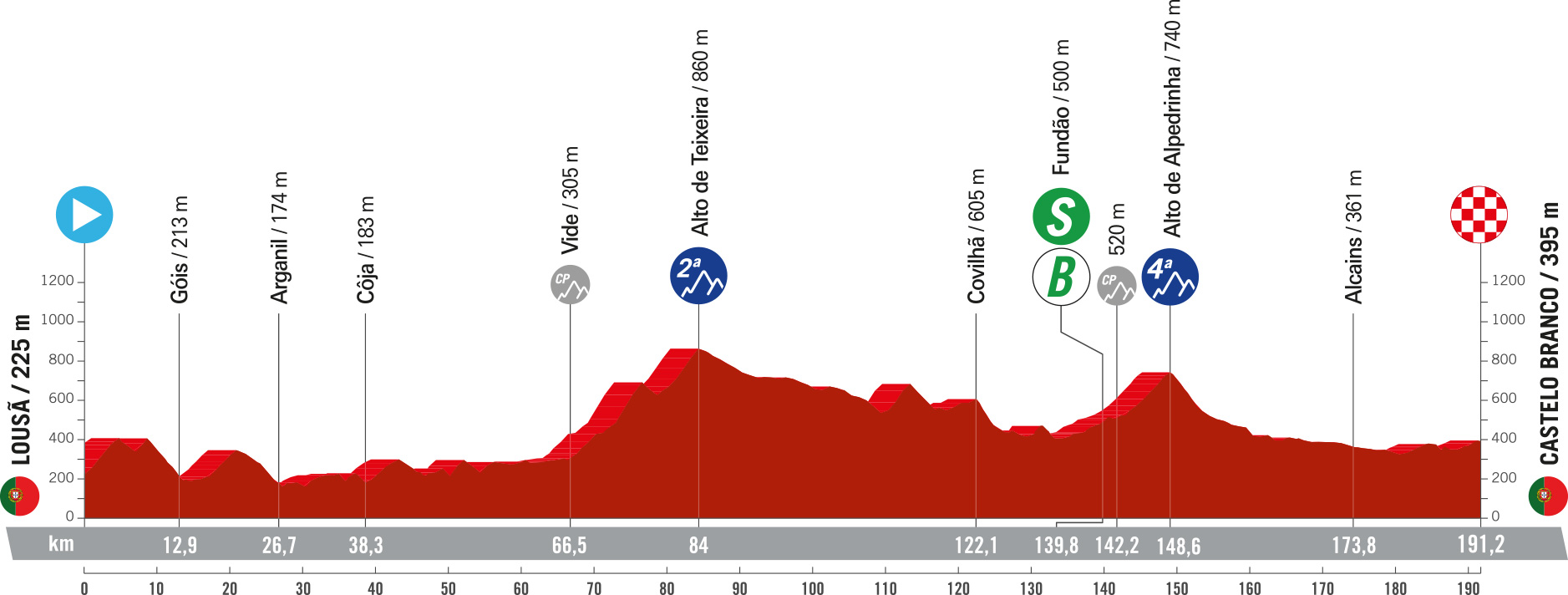
For the third and final day in Portugal, the Vuelta takes place over more challenging terrain. Serra da Estrela Natural Park is the highest mountain range in mainland Portugal, a remote area where shepherds reside – their sheep are the source of the renowned local Serra da Estrela cheese. It’s also the location of the nation’s highest point, the 1,993m Torre plateau, but today’s stage rises to less than half that. The road undulates upon leaving the start in Lousã, until entering Serra da Estrela and climbing the category-two Alto de Teixeira. It then exits the national park and heads southwards to the finish in Castelo Branco, but not before climbing the category-four Alto de Alpedrinha, with 42km left to ride. This flat run-in to the finish at Castelo is long enough for the peloton to organise and reel in a breakaway for a sprint.
Tuesday 20 August: Plasencia > Pico Villeurcas
If there's one thing the organisers of the Vuelta love, it’s a summit finish, and they’ve wasted no time in including one this year – on the very day the race first enters Spain. This is a proper mountain stage, too, with the category-two Puerto de Cabezabellosa and category-one Alto de Pironal (atop which Remco Evenepoel won a stage in 2022) tackled in the first third of this stage through Spain’s sparsely populated Extremadura region, albeit followed by a flatter and then more rolling section prior to the finish at Pico de Villuercas.
Pico de Villuercas hosted a finish of the 2021 Vuelta won by Romain Bardet, when all the GC favourites finished within 16 seconds of each other. This time, the riders will take the climb on from a different side via Navezuelas, which averages 6.2% for 14.6km, with the steepest, double-digit gradients coming in the second half – more than hard enough for the first GC sort-out of the race.
Wednesday 21 August: Fuente del Maestre > Sevilla
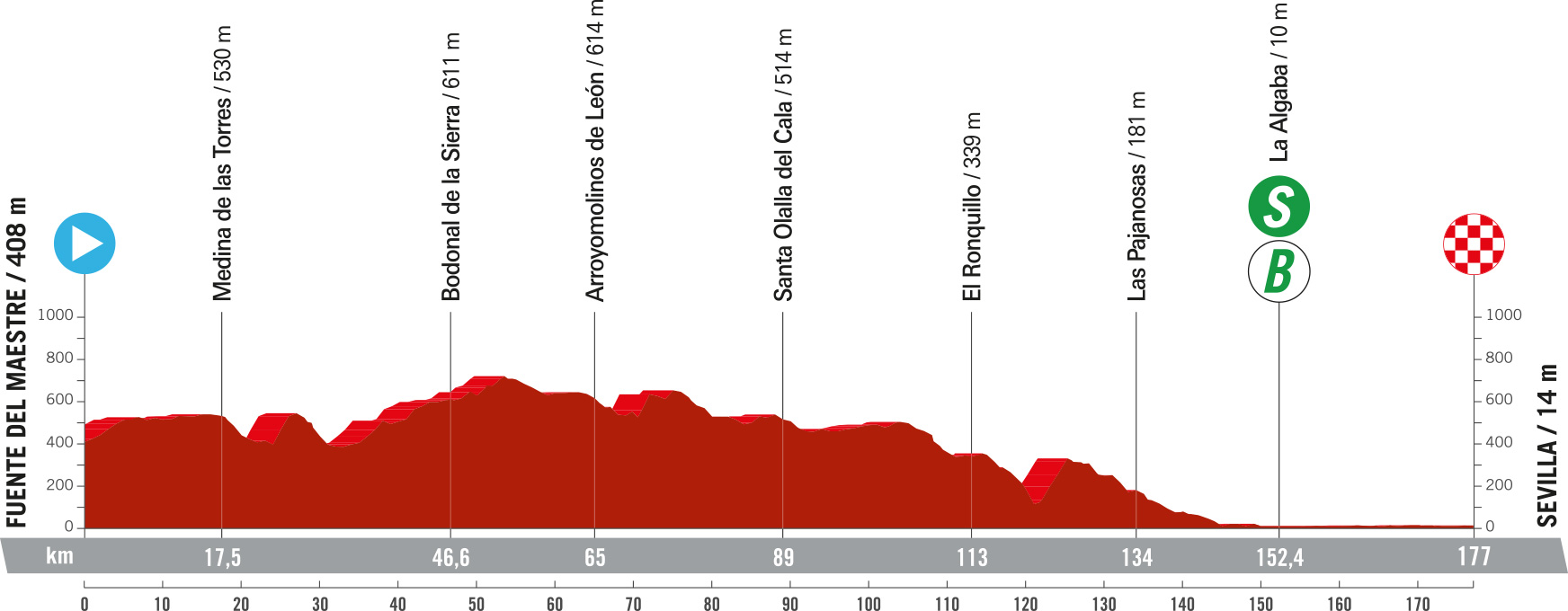
As the only road race of the entire Vuelta to have been labelled by the organisers as ‘flat’, today is an opportunity the sprinters can’t afford to miss. In fact, the roads that take them southwards out of Extremadura and into Andalusia are better described as downhill, with the riders starting the day nearly 500 metres high in Fuente del Maestre, and ending it at sea level in Sevilla.
Famous for its nightlife, well-preserved old town, and for being the supposed birthplace of flamenco, Sevilla is hosting a stage of the Vuelta for the first time since 2011, when HTC Colombia won a nocturnal team time trial under the lights, with their leader Mark Cavendish taking the red jersey. The last time Sevilla hosted a Vuelta road stage was in 1996, when Jeroen Blijlevens won a bunch sprint – another one is almost certain today.
Thursday 22 August CARREFOUR JEREZ SUR. JEREZ DE LA FRONTERA > YUNQUERA | 185.5KM | MOUNTAINS
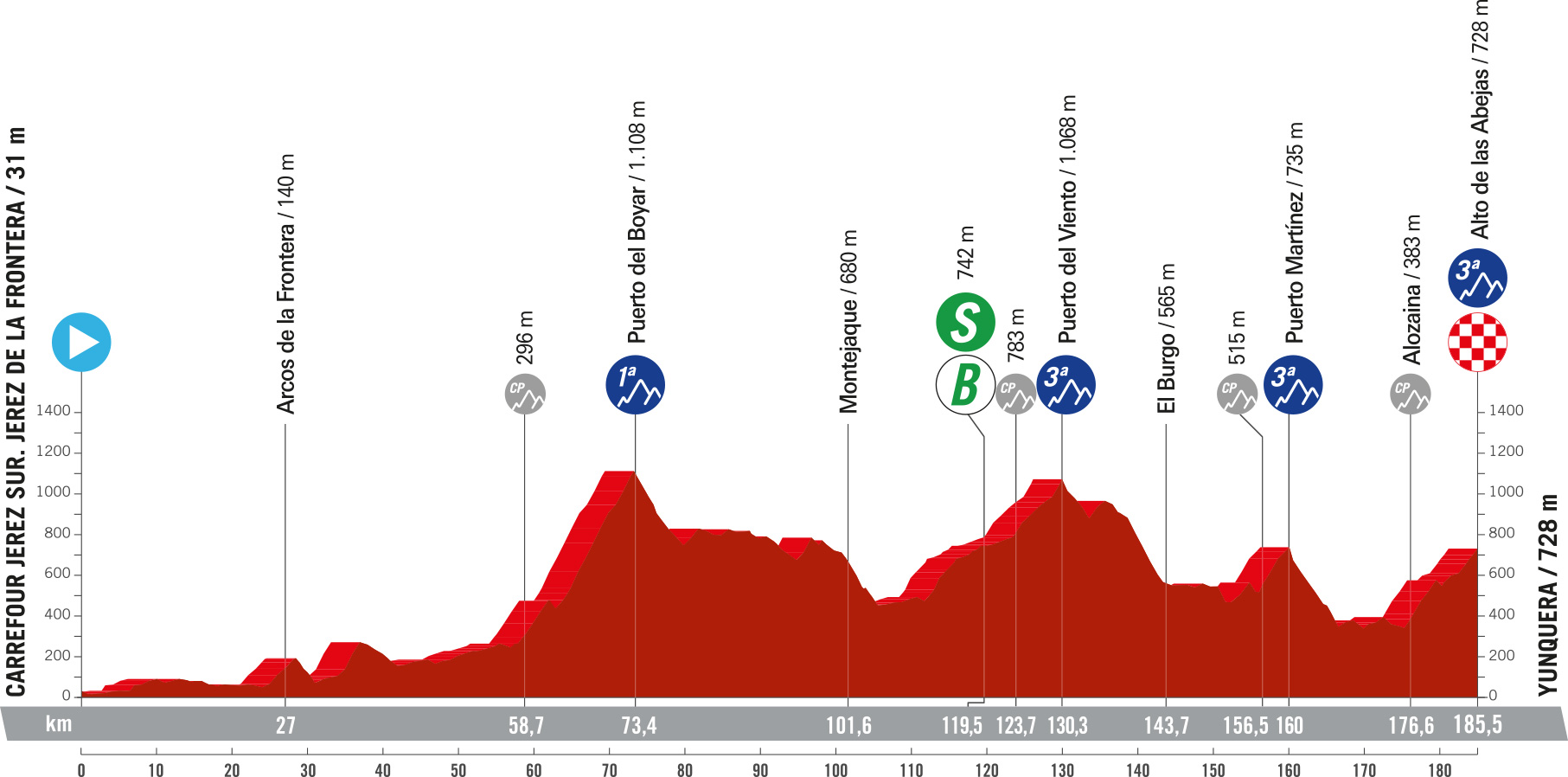
Today's stage will be the first of four held exclusively in Andalusia. It can get very hot in this part of Spain, especially in August, where temperatures regularly exceed 30oC. Making the riders even more uncomfortable will be the testing terrain. There are four climbs in total, analogous to the Andalusian specialty of tapas, in that though the riders will sample lots of them, they’re all relatively small. The first, the category-one Puerto del Boyer, is the exception, but neither of the following two last longer than 6km, while the 9km length of the finishing effort to Alto de las Abejas is tempered by its mild, 4% gradients. A breakaway frequented by puncheurs is therefore likely to contest the stage, though there might be some GC action on the final climb.
Friday 23 August: Archidona > Córdoba
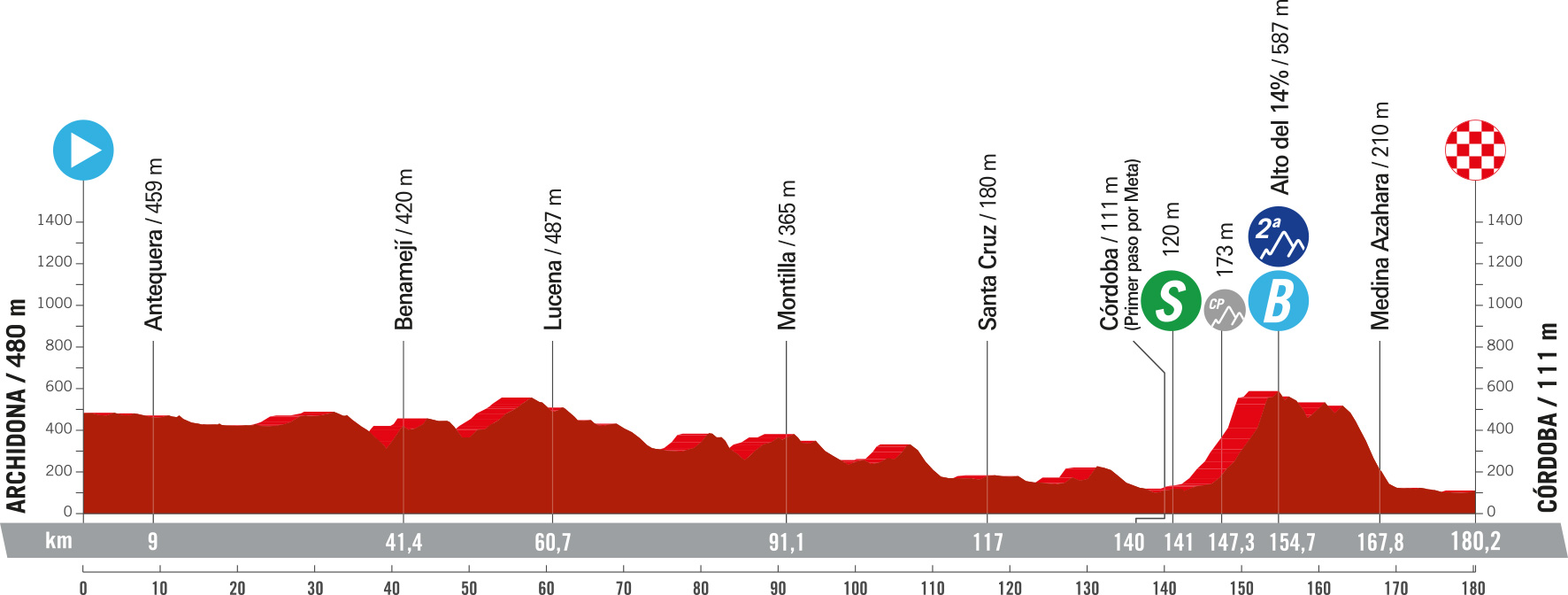
There is only one climb to be taken on during today’s trek northwards to the historic town of Córdoba, but it alone might be enough to deny the sprinters. Though the gradient may average out at less than 6% for the duration of its 7.4km, the maximum slopes signified by the title of the ‘Alto del 14%’ will give explosive puncheurs a chance to break clear and try to survive the 25km from its summit to the finish. This same climb was not enough to prevent a bunch sprint when it was used in 2021 and 2014, though it was a close-run thing on the former occasion, the catch only made 1km from the finish. And don’t discount the effect of the descent — the Liquigas-Cannondale team used it to launch a thrilling attack with five of their riders flying out of the peloton together in 2011, with Peter Sagan taking the stage and Vincenzo Nibali gaining seconds in his GC bid.
Saturday 24 August
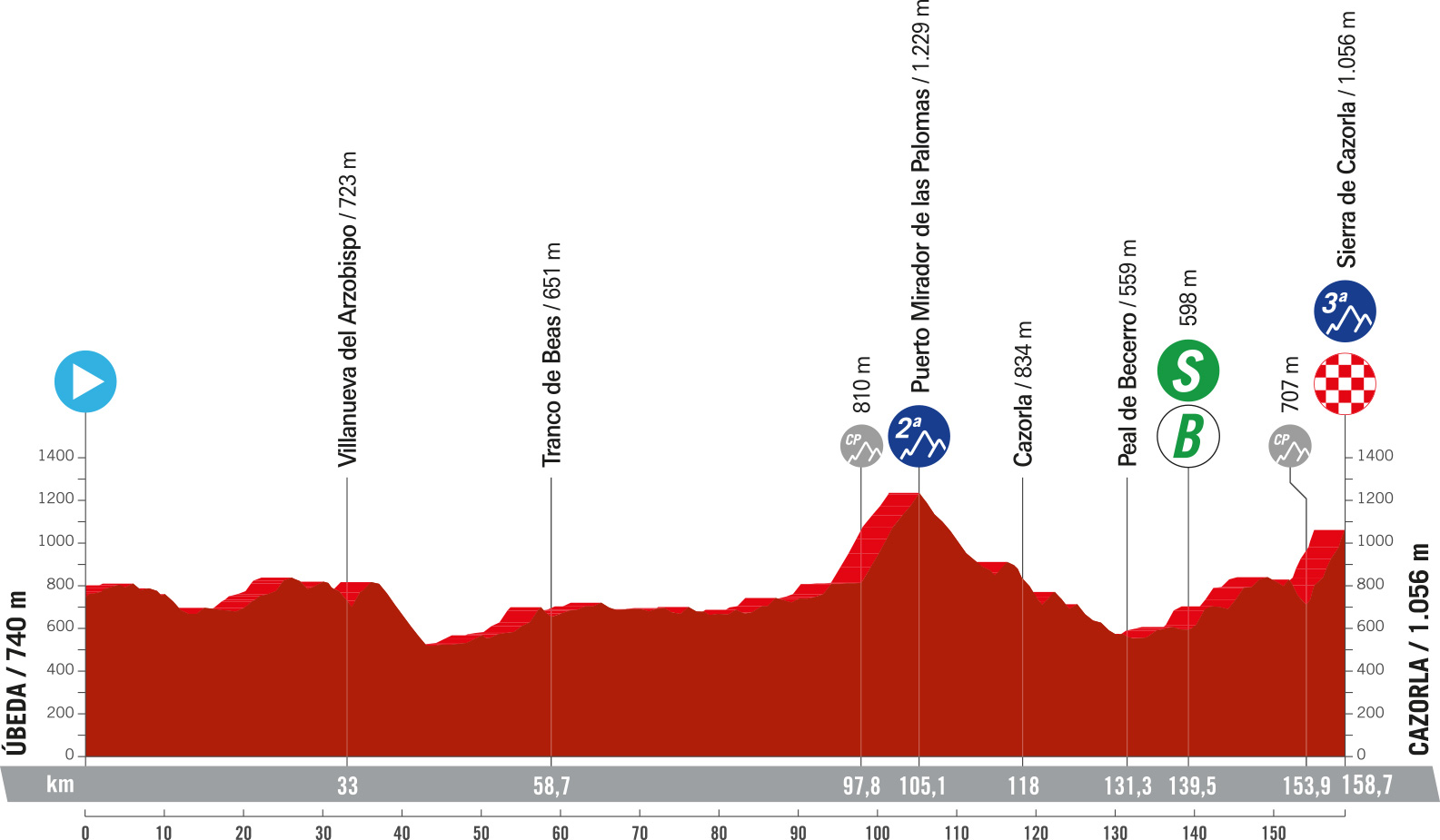
Setting off from the Renaissance city of Úbeda, the same hot, dry summer weather that makes the Jaén region the largest olive-producing area in the world could severely sap the riders’ reserves. At least they won’t have to contend with any climbs for the first half of the stage, although things get harder 98km into the stage when they’re confronted with the category-two Puerto Mirador de las Palomas.
It’s the final climb of the day to the finish in Cazorla, however, that will determine the outcome of the stage. Short at only 4.8km, but averaging about 7%, the Sierra de Carola is a typical Vuelta finish, even if it has only hosted a stage finish once before in 2015, when Esteban Chaves attacked 2km from the finish to take the stage and reclaim the red jersey from Tom Dumoulin. There could be time gaps between the GC contenders, but likely only minor ones.
Sunday 25 August MOTRIL > GRANADA | 178.5KM | MOUNTAINS
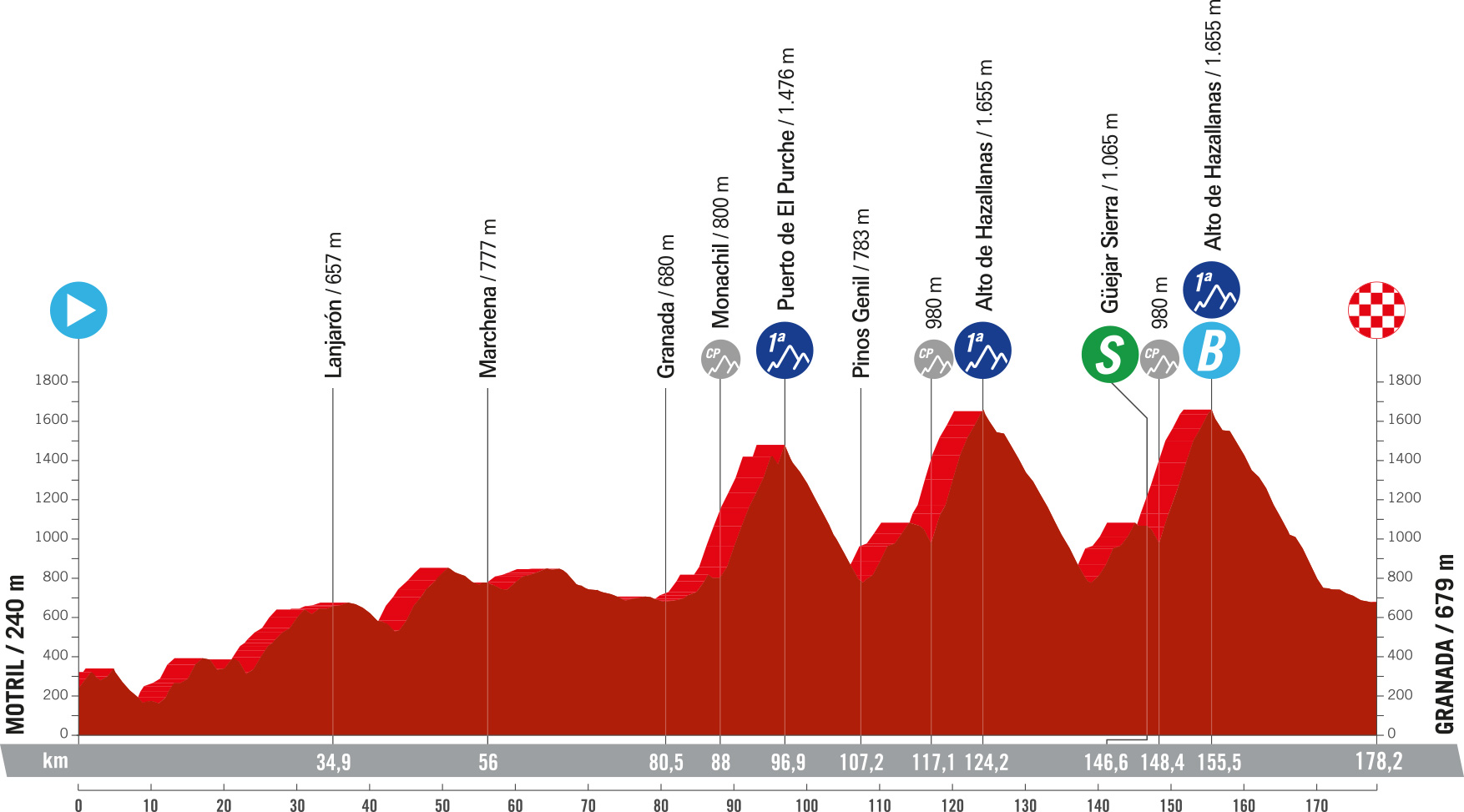
From the start in a seaside town of Motril, the Vuelta heads northwards over the Sierra Nevada for what is the first proper mountain test of the race. It’s the way the day’s three category-one mountains are tackled in such quick succession from the onset of Puerto de El Purche 90km from the finish, that sets it apart from the previous stages this week, making it a much more intensive test.
After El Purche comes a double ascent of the 7km Alto de Hazallanas, which could cause carnage among the GC contenders. Upon cresting it the second time, the riders will descend to a finish in Granada, rather than continuing to climb to the ski station summit of Sierra Nevada as they did in 2022 when Remco Evenepoel’s overall lead was put under serious pressure. Even without that extra ascent, though, the climb’s extreme gradients of nearly 10% are enough to force the GC into a definitive shape at the end of the first week.
27 August PONTEAREAS > BAIONA | 160KM | MOUNTAINS
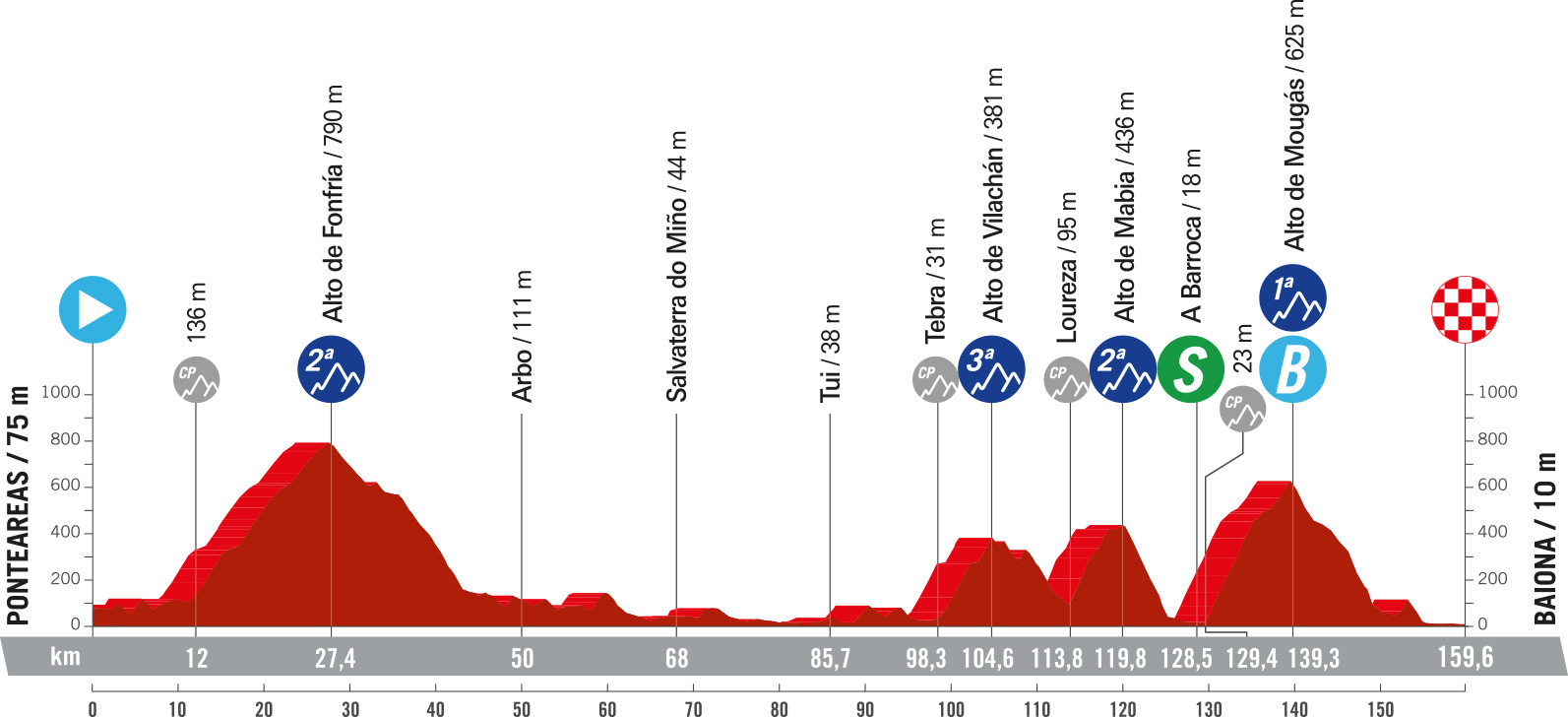
A long transfer takes the race to the other side of the country for the second week, for the first of four stages in Galicia. The region has a much milder climate, cooled by the air coming in from its Atlantic coastline, but inland there are plenty of hills and rolling terrain.
Four hills have been included for stage 10, none rising above 800m but still posing some tough gradients that could favour stage-hunting puncheurs. They will use the day’s longest, the 15km Alto de Fonfria, at the start to try and get into the break, but it’s the category-one Alto de Mougás, and its subsequent 20km downhill and flat to the finish in Baiona, that will determine who will be victorious.
Wednesday 28 August: Padrón > Padrón
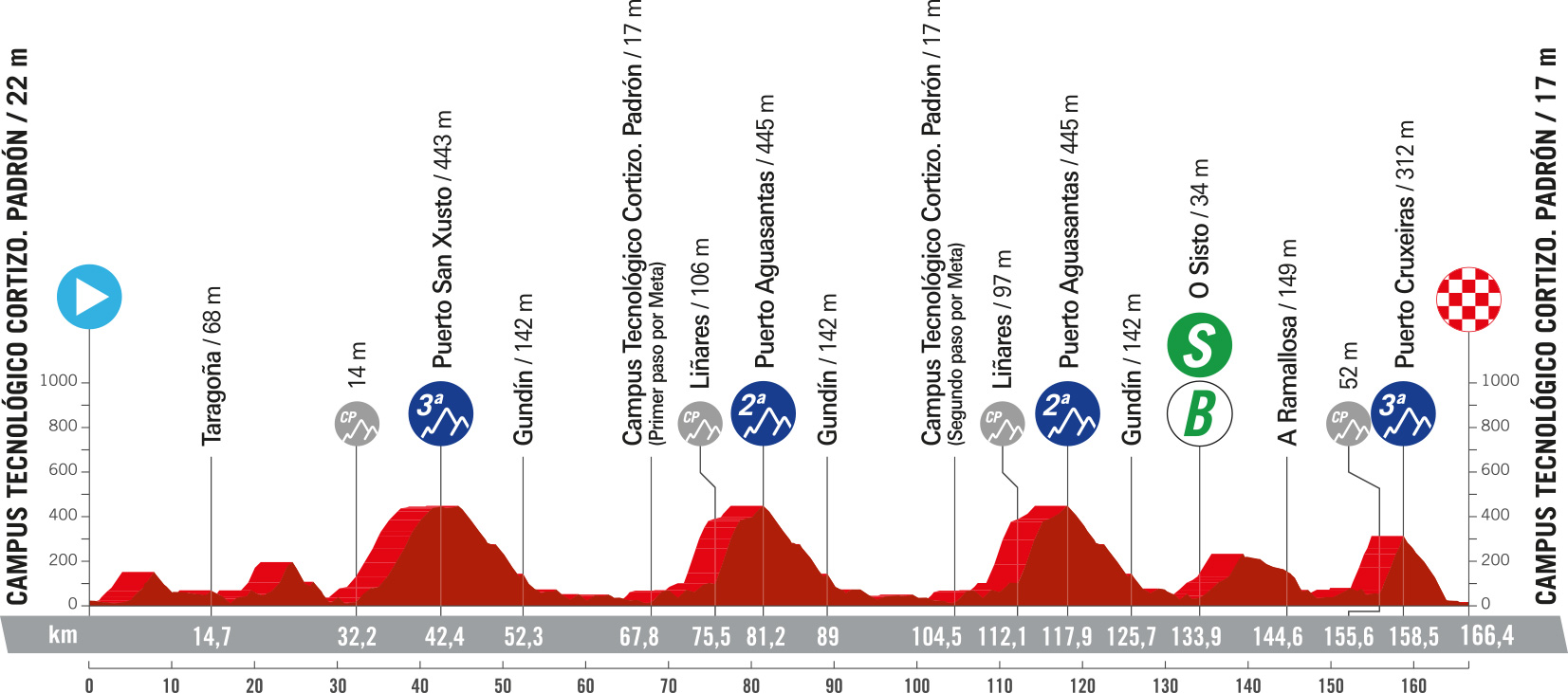
On both the previous occasions Padrón has hosted the start of a Vuelta stage, it has been for time trials leading towards Santiago de Compostela – destination of the famous Camino de Santiago pilgrimage. In 2021, Primož Roglič secured his third Vuelta overall victory with a stage win, while in 1993 an ill Tony Rominger hung on to overall victory by 29 seconds.
Today's route will tackle several loops in and out of Padrón rather than enter Santiago de Compostela. Four gentle climbs mean the same puncheurs who were in the mix yesterday could be again today, with both the uphill and downhill of the Puerto Cruxeiras, 8km from the line, likely to be decisive.
Thursday 29 August: Ourense Termal > Estación de Montaña de Manzaneda
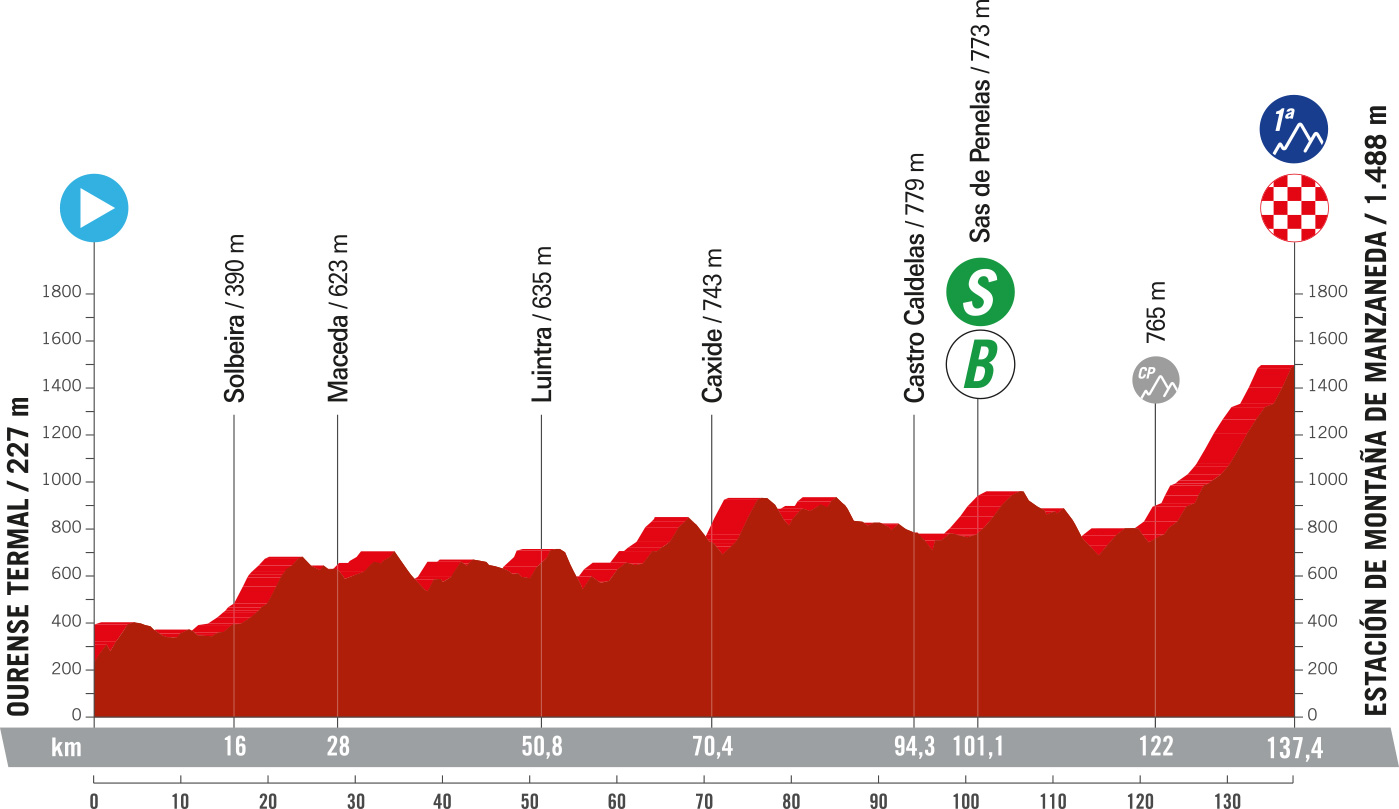
Ourense is another town on the Camino de Santiago, but like yesterday the stage will again bypass the cathedral at the end of that pilgrimage, this time heading eastwards rather than northwards, to the ski resort in Manzaneda. It’s not a long trip – in fact, it’s the shortest of the whole Vuelta, but the undulating roads leading towards the foot of the final climb will make it a testing stage nevertheless.
Ignore the ‘hilly’ designation: the Estación de Montaña Manzaneda is very much a mountain. It’s a real grind of a climb, not especially steep, but dragging on through exposed roads for 15km before finally reaching the summit at almost 1,500m. It was enough to reduce the peloton to only 14 riders when it featured at the 2011 Vuelta, with a young Chris Froome among those dropped, handing the red jersey to his team-mate Bradley Wiggins.
Friday 30 August: Lugo > Puerto de Ancares
Leaving Galicia and into Castille y León via a couple of hills, stage 13 will end with a climb that was the final hurdle for Alberto Contador to overcome en route to overall victory in 2014, when he withstood multiple attacks from Chris Froome to defend the red jersey.
This year the riders will climb to the summit at Los Ancares via a different road, but it is still arguably the hardest (and, at 1,669m, officially the highest) summit finish so far, with a game- changing average gradient of over 9% for 7.5km. The fact that only four riders finished within 2.50 of Contador 10 years ago shows how big the differences among the GC contenders could be today – although two years prior it proved to be far less definitive, as Contador failed to prise the red jersey from Joaquim Rodríguez, only to ultimately succeed the following week. It’ll be a very important day, but maybe less so than the harder mountain stages to come.
Saturday 31 August: Villafranca del Bierzo > Villablino
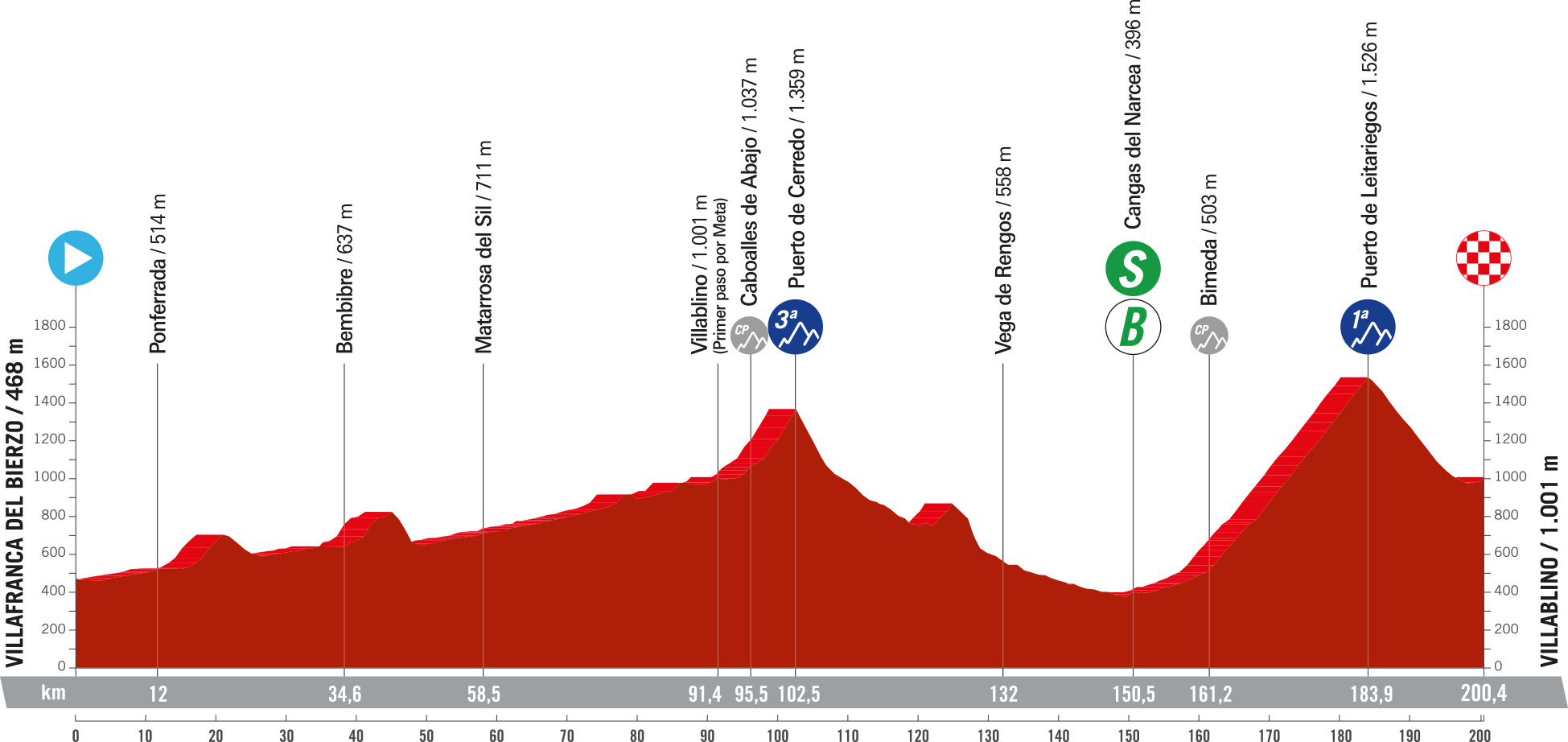
Sunday 1 September: Infiesto > Valgrande-Pajares. Cuitu Negru

Only tarmacked in 2012, for the specific purpose of hosting the Vuelta a España, the sadistic slopes in excess of 20% towards the top of Cuitu Negru reduced riders to a crawl that year, as stage winner Dario Cataldo completed the final stretch at virtually walking pace, with Thomas De Gendt almost collapsing in a heap as he crossed the line just behind in second. Worse still, this ultra-steep section comes after the riders have already spent the previous 13km climbing to the summit of Puerto de Pajares at 7%, making this both the highest, and hardest, mountain of the whole Vuelta. Add to that the fact that the riders must first complete a double ascent of the category- one Alto de la Colladiella (6.4km at 8.2%), plus the smaller Alto de Santo Emiliano in between, and this stage should leave us with a clearer picture of who will wear the red jersey in Madrid.
Tuesday 3 September LUANCO > LAGOS DE COVADONGA | 181.5KM | MOUNTAINS
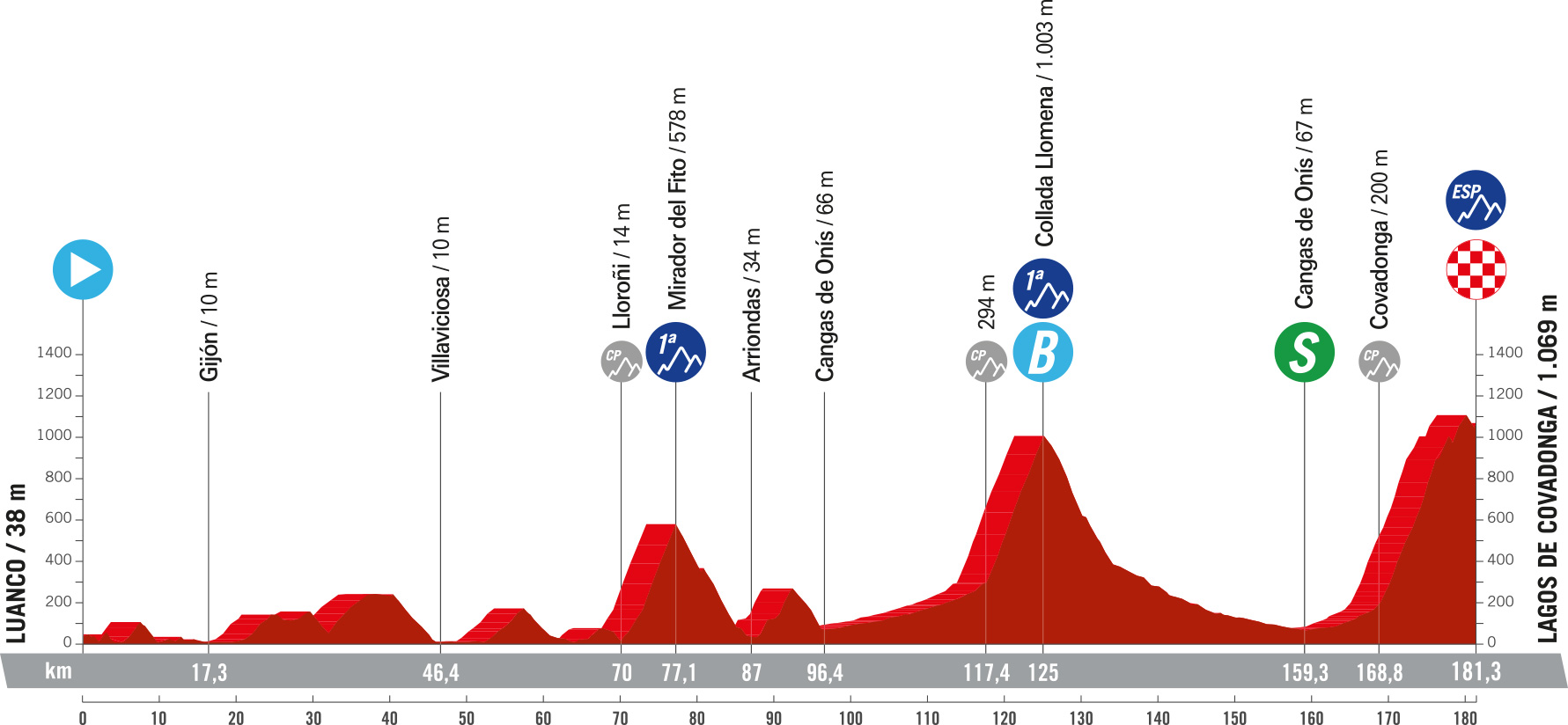
The serene glacial lakes at the summit of Lagos de Covadonga have formed the backdrop for more Vuelta stages than any other mountain since it was first introduced in 1983, with such Vuelta icons as Primož Roglič, Nairo Quintana, Laurent Jalabert, Pedro Delgado and Lucho Herrera among the 19 riders to have triumphed on its fluctuating, rhythm-busting gradients.
Though the 44km of downhill and valley roads leading up to the foot of the Covadonga might appear to rule out early attacks, the Vuelta’s last visit here in 2021 sets an intriguing precedent – then, Egan Bernal successfully rode away with Primož Roglič on Collada Llomena, before Roglič went solo on Covadonga to win the stage by over a minute- and-a-half and land a decisive blow in his red jersey title defence. Wherever the attacks come, expect today to be similarly consequential.
Wednesday 4 September: Arnuero > Santander
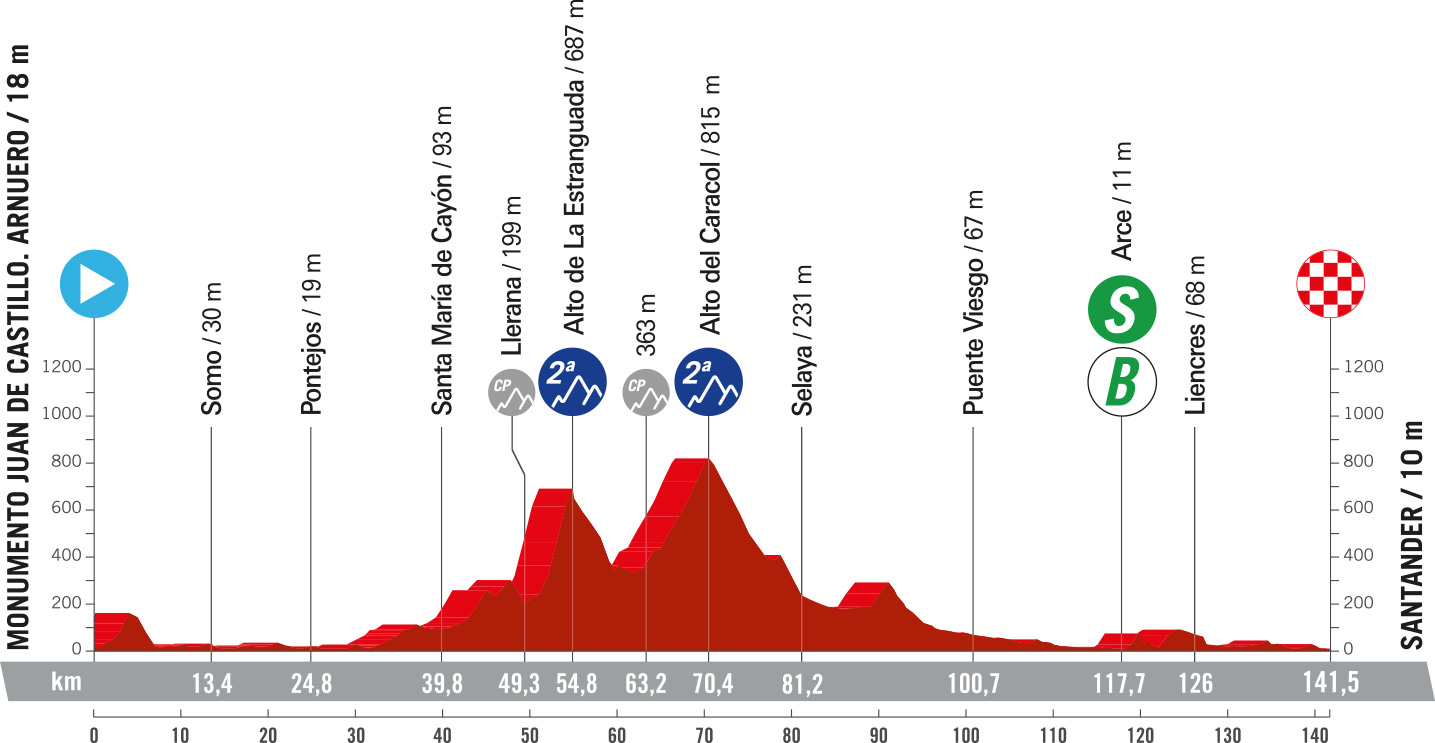
This will be the 36th occasion Santander has hosted a finish of the Vuelta, the last time being 2003, when Alessandro Pettachi won an opening-week stage. Whereas that day stuck mostly to flat roads on the coast, today the riders are sent inland to tackle some of the hills of Cantabria, meaning a repeat of that bunch sprint is far from certain.
The million-dollar question is whether the pair of category-two climbs that come in quick succession in the stage’s first half are hard enough to deter the sprinters’ teams from chasing, or if the long, easy 70km run-in from the last summit back northwards towards the coast will allow the break to be brought back. Teams will be exhausted after a string of hard days, but as the last of very few chances for bunch sprints, there is a great incentive to commit to chasing.
Thursday 5 September VITORIA GASTEIZ > MAEZTU-PARQUE-NATURAL DE IZKI | 179.5KM | MEDIUM MOUNTAINS
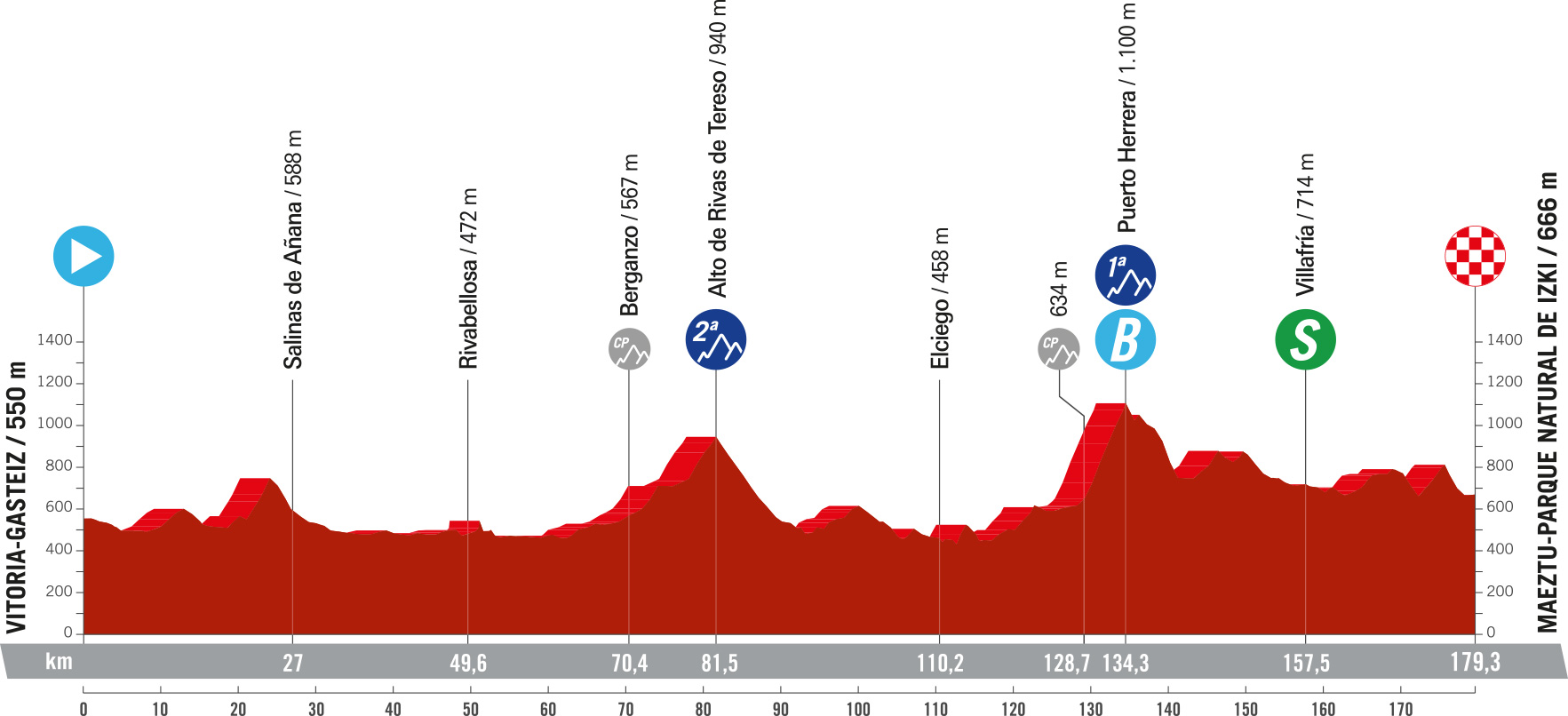
Orange clothing galore, the Ikurriña flag flying on a hillside, passionate fans screaming encouragement in a unique-sounding language. All this can only mean one thing: we’re in the Basque Country. This is one of the most cycling-mad regions in all of the world, and it’s easy to see why, given how exciting the terrain here can make racing.
Today’s stage is typical for the Basque Country in that it undulates all day without featuring a single standout climb. The 8% slopes make the 5.6km Puerto Herrera the stiffest challenge of the day. The ups, downs and narrow roads that make up the remaining 45km after it towards the finish through Izki Natural Park will be tricky to navigate. The GC contenders are unlikely to be drawn into action, but there should be a thrilling contest among puncheurs for the stage win.
Friday 6 September LOGRONO > ALTO DE MONCALVILLO | 173.5KM | HILLY
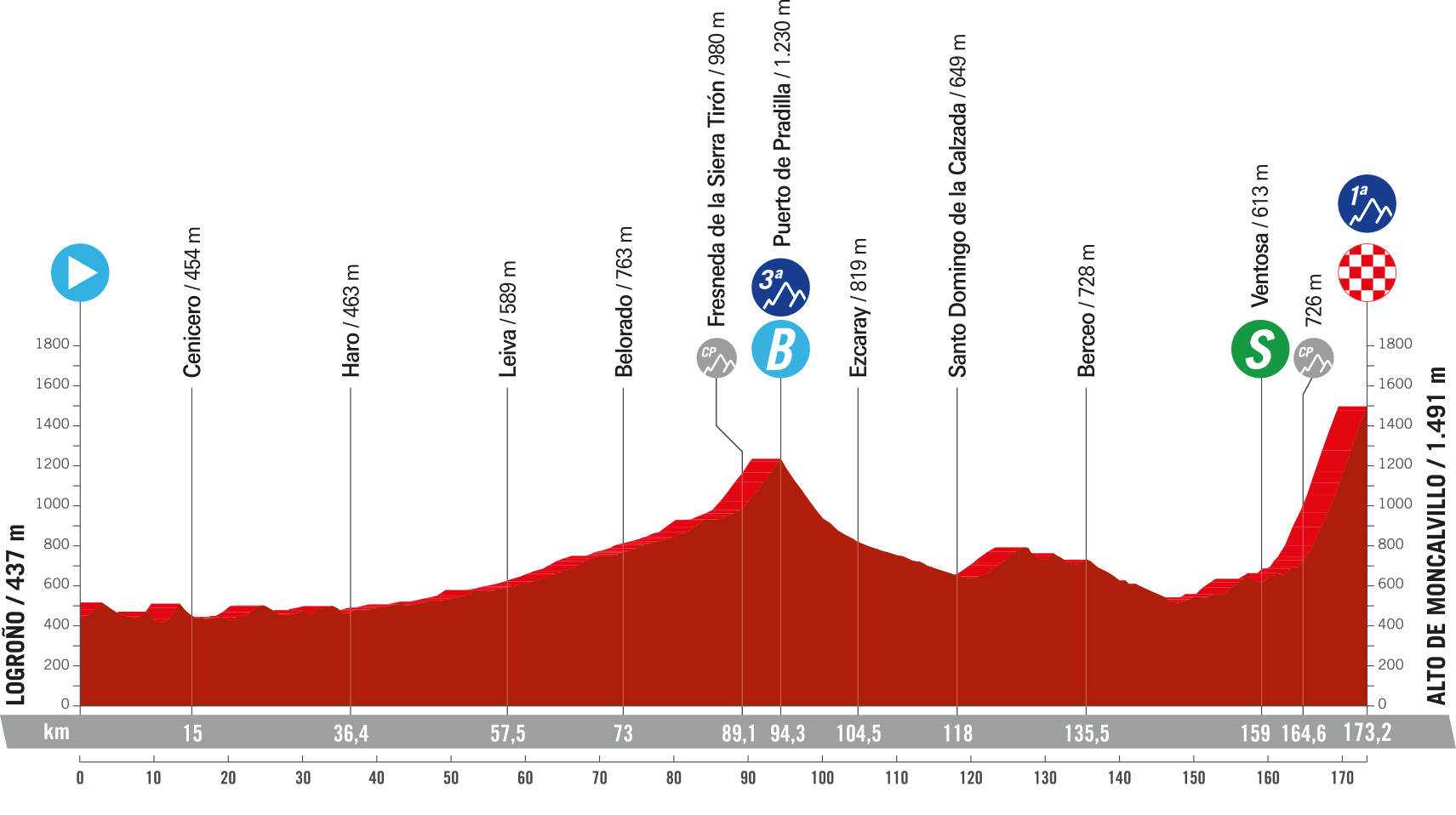
The first of two consecutive mountain-top finishes, followed by Sunday’s climactic time trial in Madrid, stage 19 marks the beginning of this Vuelta’s endgame. Riders head out westwards from Logrono on flat roads though the La Rioja wine region before looping back eastwards via the false flat and then official climb of Puerto de Pradilla. Another prolonged flat section then precedes the Alto de Moncalvillo.
The Moncalvillo is a serious prospect that could change the course of the GC race. For most of its 8.6km the riders will climb at around 9%, with one section at 15%, which was enough to see all of the GC contenders separated by seconds and arrive at the finish one-by-one behind stage winner Primož Roglič when the mountain first hosted a Vuelta finish four years ago.
Saturday 7 September: Villarcayo > Picón Blanco
The Vuelta organisers have saved the hardest mountain stage until last, contriving a true monster of a day through the summits of Burgos. There are seven climbs in total, each one harder than the last. Though none quite match the difficulty of yesterday’s finish at Alto de Moncalvillo, all together they amount to over 4,000m elevation gain, ensuring its status as the queen stage.
In theory the GC action could ignite at virtually any moment, depending on how ambitious those aiming to gain time are feeling, but the 20km-long valley between the peak of the penultimate Puerto de los Tornos and the foot of the climactic Picón Blanco may dissuade anyone from committing too deeply before that final climb. Averaging 9.1% for 7.9km, Picón Blanco is the hardest and by far the steepest of the day’s climbs, and, at the twilight of the race, carries the potential to heartbreakingly unravel a contender’s GC dreams.
Sunday 8 September: Madrid > Madrid
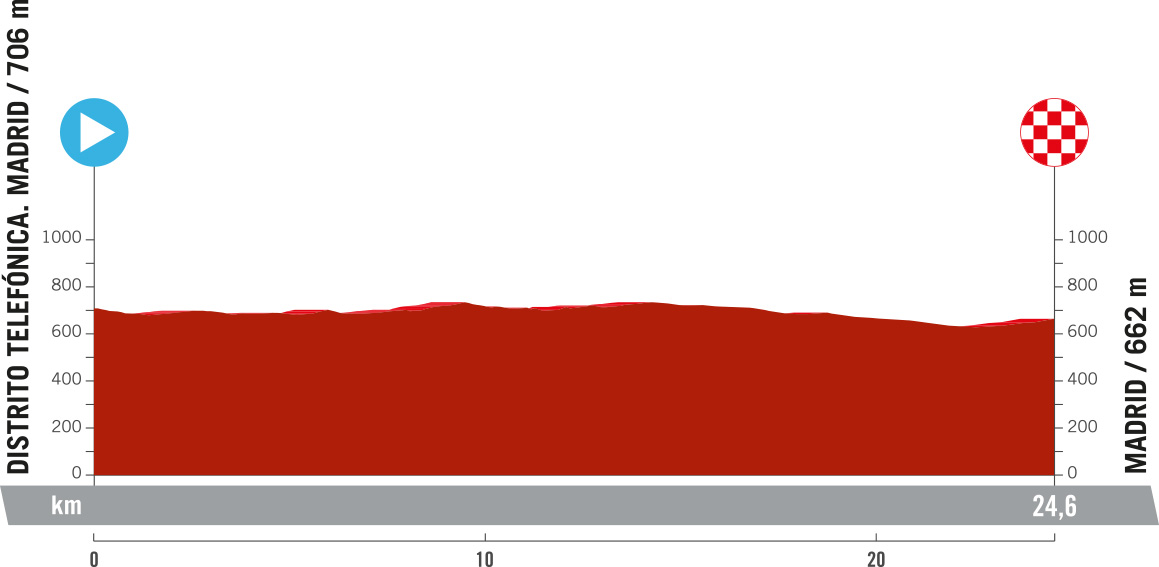
After a long transfer, the Vuelta reaches its traditional climax at Madrid. This year, however, the usual processional sprint stage is replaced by a 24.6km time trial, meaning the GC race could still be on.
That was the case the second-to- last time the Vuelta finished with a Madrid time trial in 2002, when Aitor González put over three minutes into Roberto Heras to snatch overall victory from him at the death. On this occasion, the totally flat nature of the parcours will exacerbate the differences in time trialling ability between the GC contenders. If the time gaps between them at the top are still close enough, a similarly dramatic late twist in the race for the red jersey is possible.
The final Grand Tour of 2024 will be a race for the climbers
The sprinters of the pro peloton could be forgiven for feeling a little aggrieved about the end-of-season races this year. The race directors of the major events have clearly opted not to design parcours suited to them.
The Olympic road race was too hilly for any pure fastman to take any of the limited starting places for their nations, and the World Championship route in Zurich is equally unfavourable. So what of the Vuelta? A race that so often serves up some long, flat, relaxed stages for the sprinters to unleash their speed at the end. Not so this year.
With eight classified mountain stages, five medium mountain stages, five hilly stages (some of which have uphill finishes) and two time trials, what’s left is just one flat stage.
Never mind the big-name sprinters, even the majority of the second-rate sprinters who came out of the Tour de France empty-handed aren’t bothering with the final Grand Tour of the year.
To add insult to injury for the fastmen, the final stage isn’t a flat, city centre circuit race, but instead a 24.6km individual time trial.
It's fair to say that any sprinters flying to Spain this month probably won't have their bikes with them but will instead be taking an early holiday.
So expect a race for the climbers. This is a Vuelta for the lightweight mountain men who until now have been fighting for scraps in the wheeltracks of the unstoppable Tadej Pogačar.
Vuelta a España 2024 route: stage by stage
| Stage | Date | Start | Finish | Distance | Profile |
| 1 | 17 August | Lisbon | Oeiras | 12km | ITT |
| 2 | 18 August | Cascais | Ourém | 191km | Hilly |
| 3 | 19 August | Lousã | Castelo Branco | 182km | Hilly |
| 4 | 20 August | Plasencia | Pico Villuercas | 167km | Mountain |
| 5 | 21 August | Fuente del Maestre | Sevilla | 170km | Flat |
| 6 | 22 August | Jerez de la Frontera | Yunquera | 181km | Mountain |
| 7 | 23 August | Archidona | Córdoba | 179km | Hilly |
| 8 | 24 August | Ubeda | Cazorla | 159km | Mid-Mountain |
| 9 | 25 August | Motril | Granada | 178km | Mountain |
| Rest day | 26 August | Row 10 - Cell 2 | Row 10 - Cell 3 | Row 10 - Cell 4 | Row 10 - Cell 5 |
| 10 | 27 August | Ponteareas | Baoina | 160km | Mountain |
| 11 | 28 August | Padrón | Padrón | 164km | Mid-Mountain |
| 12 | 29 August | Orense | Manzaneda | 133km | Hilly |
| 13 | 30 August | Lugo | Puerto de Ancares | 171km | Mountain |
| 14 | 31 August | Villafranca del Bierzo | Villablino | 199km | Mid-Mountain |
| 15 | 1 September | Infiesto | Cuitu Negru | 142km | Mountain |
| Rest day | 2 September | Row 17 - Cell 2 | Row 17 - Cell 3 | Row 17 - Cell 4 | Row 17 - Cell 5 |
| 16 | 3 September | Luanco | Lagos de Covadonga | 181km | Mountain |
| 17 | 4 September | Arnuero | Santander | 143km | Mid-Mountain |
| 18 | 5 September | Vitoria-Gasteiz | Izki Natural Park | 175km | Mid-Mountain |
| 19 | 6 September | Logroño | Alto de Moncalvillo | 168km | Hilly |
| 20 | 7 September | Villarcayo | Picón Blanco | 188km | Mountain |
| 21 | 8 September | Madrid | Madrid | 22km | ITT |

Tom joined Cycling Weekly as a news and features writer in the summer of 2022, having previously contributed as a freelancer. He is fluent in French and Spanish, and holds a master's degree in International Journalism. Since 2020, he has been the host of The TT Podcast, offering race analysis and rider interviews.
An enthusiastic cyclist himself, Tom likes it most when the road goes uphill, and actively seeks out double-figure gradients on his rides. His best result is 28th in a hill-climb competition, albeit out of 40 entrants.